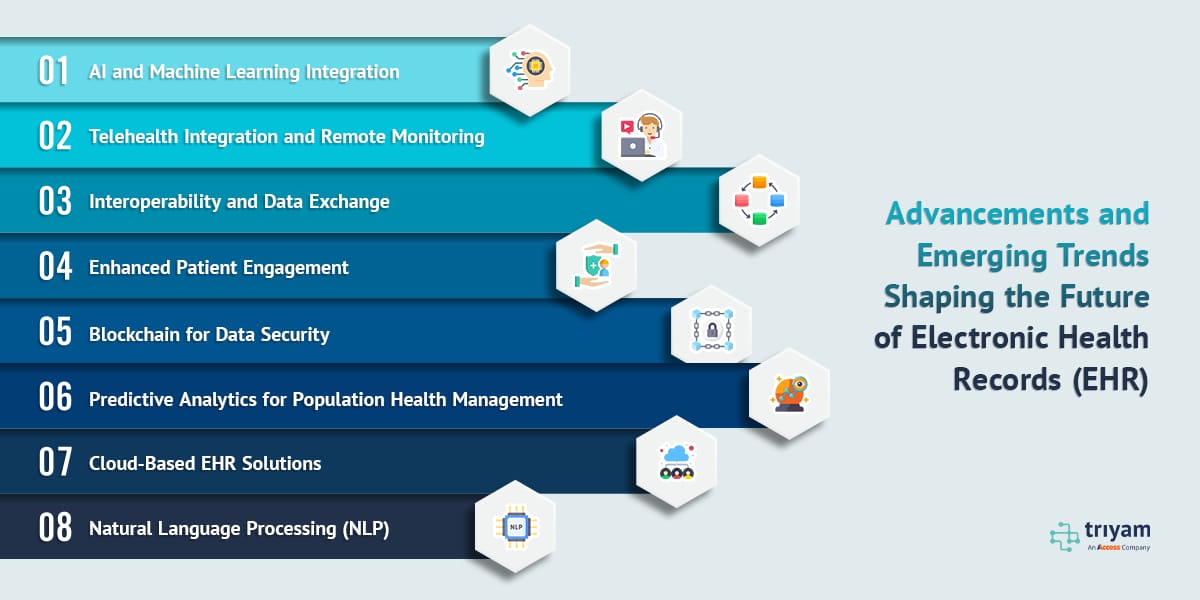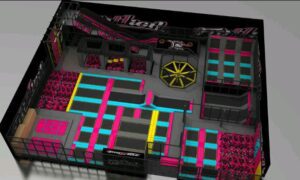The landscape of healthcare is rapidly evolving, and at the center of this transformation is the Electronic Health Record (EHR) system. Once simply a digital replacement for paper charts, EHRs are now becoming sophisticated tools that support not just documentation, but enhanced patient care, streamlined workflows, and predictive health outcomes. As healthcare moves toward a more digital future, innovations in EHR technology are shaping the way care is delivered and managed.
- AI and Machine Learning Integration
Artificial intelligence (AI) and machine learning (ML) are driving unprecedented changes in healthcare, and their impact on EHR systems is profound. AI-powered EHR systems can analyze vast amounts of patient data to provide clinicians with actionable insights, predict patient outcomes, and even suggest potential diagnoses or treatments.
For example, AI can assist in automatically filling out EHR fields, speeding up the documentation process while ensuring accuracy. It can also detect patterns that may not be immediately apparent to clinicians, allowing for earlier intervention in patient care. Machine learning algorithms, when applied to patient records, can predict which patients are at risk of developing certain conditions, prompting preventive care and improving overall outcomes.
- Telehealth Integration and Remote Monitoring
With the rise of telehealth, particularly during the COVID-19 pandemic, EHRs are now integrating telemedicine functionalities. The future of EHRs includes seamless connections between virtual care platforms and patient records, ensuring that health information is continuously updated and accessible in real-time, regardless of where the patient is receiving care.
EHRs are also incorporating data from remote monitoring devices, such as wearable technology. Patients using devices to track vital signs like heart rate, glucose levels, and sleep patterns can have their data automatically uploaded into their EHR, providing clinicians with a more comprehensive view of their health status between visits.
- Interoperability and Data Exchange
A critical aspect of the future of EHRs is improving interoperability—the ability of different systems to communicate and share data efficiently. The Fast Healthcare Interoperability Resources (FHIR) standard is gaining widespread adoption across the healthcare industry. FHIR is designed to enhance the exchange of healthcare information across different platforms, enabling better coordination of care among multiple providers and improving patient outcomes.
Interoperability ensures that EHRs are not just isolated silos of information but part of a larger, integrated network. As this becomes the norm, patients will benefit from more cohesive care, as clinicians will have access to complete health records, regardless of where patients have received treatment.
- Enhanced Patient Engagement
As patients increasingly take control of their health data, EHR systems are evolving to offer more robust patient portals. These portals enable patients to access their health records, communicate with their healthcare providers, schedule appointments, and even participate in decision-making regarding their treatment plans.
Looking ahead, we can expect EHRs to offer even more personalized patient experiences through mobile applications and real-time health updates. Some systems may incorporate AI-powered chatbots that can provide quick responses to patient inquiries or guide them through their care plan.
- Blockchain for Data Security
Data security remains a top concern in healthcare, and blockchain technology is emerging as a potential solution to protect sensitive patient information. Blockchain’s decentralized structure ensures that data is encrypted, verified, and nearly impossible to tamper with.
In the future, blockchain could be used to secure patient records in EHRs, ensuring that only authorized parties have access to the data and that any changes or updates to records are fully transparent. This will help address concerns about data breaches, which are costly both financially and in terms of patient trust.
- Predictive Analytics for Population Health Management
Predictive analytics is another trend that is transforming EHRs. By leveraging large datasets, EHRs can be used to identify trends within a patient population, predict outbreaks of diseases, and assess healthcare needs in advance. This not only improves individual patient care but also enhances public health management.
In the future, healthcare providers will use predictive analytics within EHRs to manage chronic diseases more effectively, allocate resources, and provide personalized care plans based on population health data.
- Cloud-Based EHR Solutions
Cloud computing is playing a vital role in the future of EHRs, offering healthcare providers more flexible, scalable, and cost-effective solutions. Cloud-based EHR systems allow for easier updates, reduced IT overhead, and better disaster recovery capabilities. They also enable healthcare organizations to store and manage vast amounts of patient data without the need for on-premises infrastructure.
As cloud technology advances, we can expect cloud-based EHRs to offer more secure and efficient ways to manage patient data, improve accessibility for healthcare providers, and enhance overall patient care.
- Natural Language Processing (NLP)
Natural Language Processing (NLP) technology is being integrated into EHRs to transform how clinicians interact with these systems. NLP can process and analyze large volumes of unstructured data, such as physician notes, and turn them into structured data that can be used for clinical decision-making.
In the future, NLP will help reduce the administrative burden on healthcare professionals by automatically generating summaries, extracting key insights from patient records, and even predicting patient outcomes based on past data. This will free up more time for clinicians to focus on patient care.
The future of EHRs lies in leveraging cutting-edge technologies like AI, machine learning, blockchain, and cloud computing to create systems that not only store patient data but actively contribute to improved patient outcomes. As these trends continue to evolve, EHRs will become more integrated, secure, and efficient, ultimately transforming how healthcare is delivered. Healthcare providers and stakeholders must embrace these innovations to stay ahead of the curve, improve patient care, and streamline operations in an increasingly digital world.
As we consider how EHRs must evolve, it’s helpful to envision what healthcare may look like in the next decade. Triyam’s “Future of Health IT” predicts that key factors such as consumerism, data-sharing, and interoperability will reshape the healthcare industry by 2030. Consumers will prioritize convenience, focusing more on prevention and overall well-being. With advancements in technology, new capabilities will emerge. The question is: are today’s EHR systems ready to support health systems in navigating this future?
Triyam is a leading provider of expert solutions and services in healthcare data management. Since 2012,our team of data experts helps healthcare and other organizations extract, convert, migrate, or archive their data via a stress-free transition to the new system, or to an archival solution called Fovea EHR Archive – that integrates with the new system. Triyam’s EHR data archival solutions help healthcare organizations decommission legacy systems, and save money while ensuring compliance with data retention requirements.





























